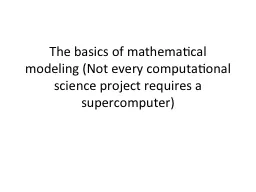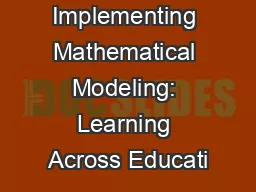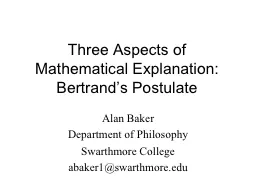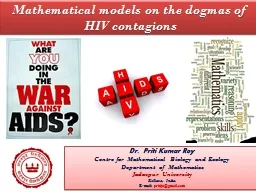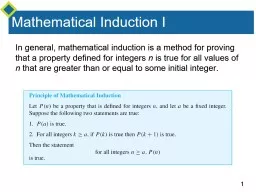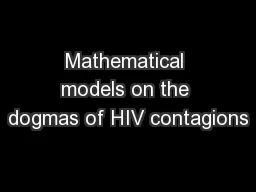PPT-The basics of mathematical modeling (Not every computationa
Author : myesha-ticknor | Published Date : 2017-06-22
Population dynamics More over The flour beetle Tribolium pictured here has been studied in a laboratory in which the biologists experimentally adjusted the adult
Presentation Embed Code
Download Presentation
Download Presentation The PPT/PDF document "The basics of mathematical modeling (Not..." is the property of its rightful owner. Permission is granted to download and print the materials on this website for personal, non-commercial use only, and to display it on your personal computer provided you do not modify the materials and that you retain all copyright notices contained in the materials. By downloading content from our website, you accept the terms of this agreement.
The basics of mathematical modeling (Not every computationa: Transcript
Download Rules Of Document
"The basics of mathematical modeling (Not every computationa"The content belongs to its owner. You may download and print it for personal use, without modification, and keep all copyright notices. By downloading, you agree to these terms.
Related Documents

